MLM social media strategies: Socializing success in multi-level marketing

Introduction
Social media, over the years, have evolved as a powerful marketing tool. From just over 2 billion users in 2014 to 5.17 billion users today, social media has become a fertile ground for sales professionals worldwide. Every business, operating online or offline, has a social media account that marks its presence in the market.
Social media has outgrown its capacity as merely a platform for social interaction; rather it has evolved as a channel that shapes cultures, drives economies, and influences global conversations. It has definitely redefined the way we communicate, consume information, and run business. It has impacted businesses from grassroots level, transforming marketing strategies, content creation, and customer approaches.
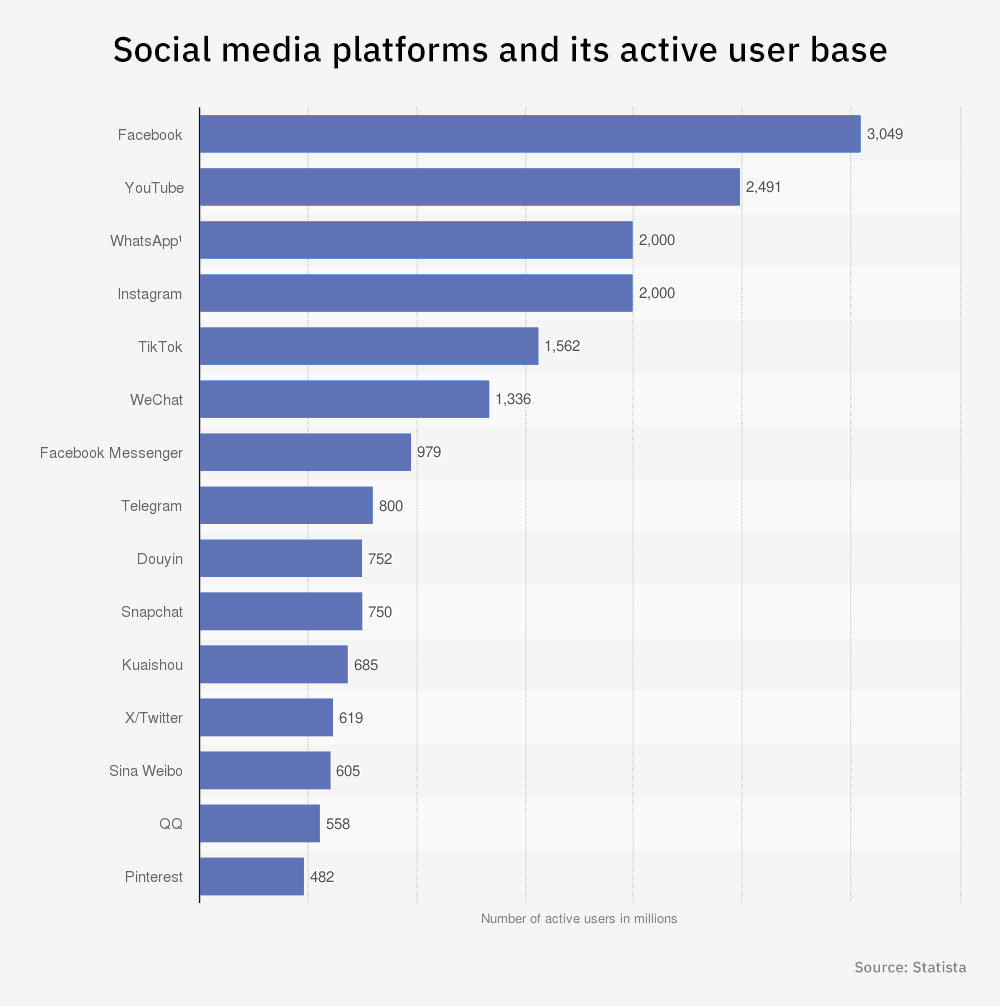
The role of social media in MLM
In multi-level marketing, a business well known for relationship building, social media serves as a catalyst that can enhance and nurture relationships. Social media platforms with their extensive user base offer businesses the opportunities to expand networks, build authentic connections, increase brand visibility, and boost sales conversions.
Social media channels encompass a vast and diverse audience group, each segment having their own interests and preferences. This necessitates strategic content creation and targeted promotions. MLM entrepreneurs can leverage the power and influence of social media to cultivate brand trust and loyalty. Distributors can use social media to expand their reach, engage with prospects, and nurture customer relationships. Underlining this fact, a report from Aberdeen Group indicates that 72% of sales professionals who employ social media for selling have outperformed their peers who don’t use the channel.
Platforms like Facebook and Instagram facilitate display of products and services, and through LinkedIn they can share testimonials and share valuable insights to their followers.
Social commerce redefines online selling
Social media platforms integrated with ecommerce create more interactive and personalized shopping experiences. With social commerce, shopping has become part of a user’s social media time. According to Statista, an individual spends an average of 151 minutes per day on social media. Companies leveraging social commerce can tap into this potential to drive more sales and customers.
For sales professionals, adopting social selling can expand their potential in reaching prospective customers and increase conversions. Out of 71% sales professionals, 90% of top-performing agents use social selling tools underlining the importance and highlighting the success of the channel.
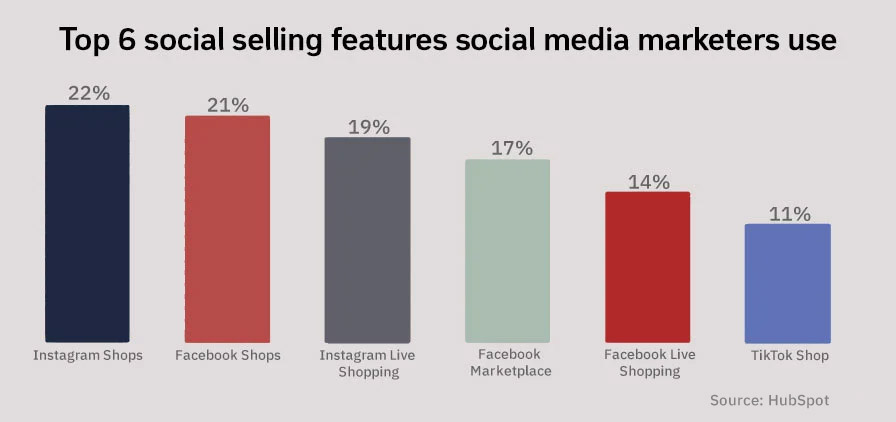
Moreover, users find it exciting to engage with brands and products in the same platform where they connect with friends and family. Social commerce offers a community-driven shopping experience for users, aligning brands with current trends and customer preferences.
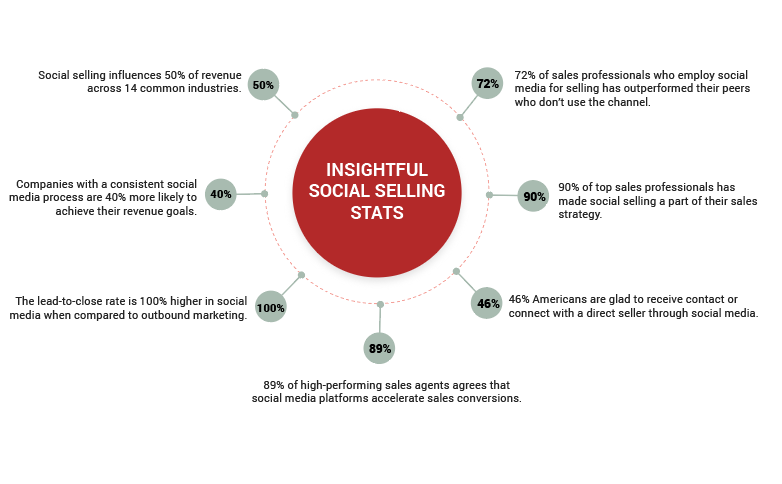
Social media challenges faced by MLM businesses
Social media platforms are incredibly diverse with its wide user base, their preferences and interests. Each platform has its own unique content formats and features. Take Instagram for example, it mesmerizes its audience with visually appealing short videos and images while Twitter (now X) focuses on concise text updates and real-time conversations. LinkedIn, on the other hand, promotes professional networking and discussions.
Users have become accustomed to these platform-specific nuances and expect brands to tailor their content accordingly. Posting the same content across all social media platforms can feel impersonal and redundant for the platform’s audience. Instead, brands should understand and embrace the individual characteristics of each platform and create content that resonates with the audience of that platform.
This approach helps brands develop an understanding of the platform’s community and contributes toward establishing authenticity and relevance.
While this stands as an important social media challenge for MLM companies, they also have to confront a multitude of other challenges to establish their social media presence successfully.
Compliance
MLM brands and their salesforce must comply with the regulations and policies while making claims on income and product efficacy.
Brand reputation
Managing brand reputation in social media with a wider distributor base from across the globe is a stringent task for MLM organizations, negligence of which hampers the reputation of the brand altogether.
Competition
Targeting the right audience and standing out among the fierce competition requires brands to have extraordinary marketing powers.
Audience engagement
Captivating a diverse audience with diverse preferences and interests, responding to their concerns, and engaging them with relevant content presents a significant challenge for MLM brands.
Authenticity
In an environment where skepticism towards MLM is prevalent, effectively conveying brand authenticity and transparency is crucial. With the increasing trend of concise content and short videos, it becomes difficult to convey customer stories and brand processes effectively.
Adapting to trends
Trends keep changing so do the features and capabilities of each social media platform. Brands need to refresh their knowledge constantly to stay updated on emerging trends to capitalize on opportunities for engagement.
Community building
Brands need to establish supportive and inclusive distributor and customer communities to underline their brand presence across channels. However, with diverse audiences, trust issues, and high turnover rates, brands find it difficult to build and maintain supportive communities.
Algorithm changes
Changes in social media algorithms need to be constantly monitored to align social media marketing strategies accordingly to maintain maximum reach and engagement.
Privacy and data protection
Rising concerns on the misuse of data, unauthorized access, and potential breaches, has largely impacted customer trust on brands. Cultivating this trust requires a proactive approach to privacy and data protection.
Social media strategies for MLM companies
Given the diverse nature and unique features of social media platforms, crafting distinct and targeted strategies for each platform becomes important to ensure effective outreach and maximum impact. Each platform presents its own set of opportunities and challenges, demanding thoughtful planning and adaptation in terms of content creation, posting, or outreaching strategies.
Identify target audience
Reaching out to the right people who are interested in the brand’s products or business opportunity creates the right impact and generates maximum output for their social media marketing efforts. Outlining strategies for content creation and outreach requires a comprehensive knowledge of audience segments, their social media activities, and preferences.
While Facebook appeals to older women, Instagram and TikTok might be instrumental in connecting with younger audiences.
Follow these steps to build the right audience group
Create ideal customer personas.
Analyze existing customer base for their preferences and behaviors.
Segment audience group based on factors such as age, gender, location, interests, and pain points.
Run detailed surveys to understand the needs and preferences of potential customers.
Rightly identifying these prospect segments also gives a fair idea on their preferred channels and post preferences.
Devise a tailored content strategy
Some platforms favor short-form and bite-sized content while others promote both short-form and long-form content. With human attention span averaging at 8.25 seconds, the former will fare well irrespective of the platform specifics. Understanding the preferences of the target audience and creating content that is in line with their interests can fetch maximum engagement and prospects.
While planning to create an influential content strategy, brands must adopt a structured approach to content creation and posting.
Set clear content goals: Decide whether the social media efforts need to drive traffic to the website, increase brand awareness, boost sales, or expand the social network.
Resonate with the audience: The content must reflect the interests and preferences of the brand’s target audience.
Develop a content calendar: Map out topics, schedule campaigns and posts to ensure consistency in content delivery.
Create engaging content: Interactive and personalized content can drive engagement among the audience group.
Deliver value: Do not post sales-focused or brand-focused content alone. Deliver value to the audience through quality and informative content.
Capitalize on engagement
In social media, what people look for in brands is not one-way experiences but engaging and interactive connections. Brands who can establish this are undoubtedly the winners, both on social media and in their customer hearts.
Brand engagement across social media platforms influences everything from brand awareness to customer loyalty. Social media engagement is not just likes and shares, it goes beyond that. Truly engaging and interactive content help create emotional connections with the audience, slowly transforming them to loyal brand advocates.
Easily identifiable metrics of engagement are
followers
Shares, retweets, or reposts
Saves
Brand mentions
Clicks
These are the best metrics to measure engagement and the result shows how well the content is resonating with the target audience.
Remember, always maintain a consistent tone and voice because that ultimately determines the brand identity.
Social media advertising
MLM companies can utilize the power of social media to launch and advertise their products or services. These platforms allow targeted advertising where companies can focus on users with specific demographics, interests, and behaviors. Added to its cost-efficiency is its potential to reach and connect with wider a audience globally.
According to a Statista report, it is estimated that by 2028 the social media ad spending generated through mobile alone will be $255.8 million. What companies must focus on is to allocate the right budget through the right channel.
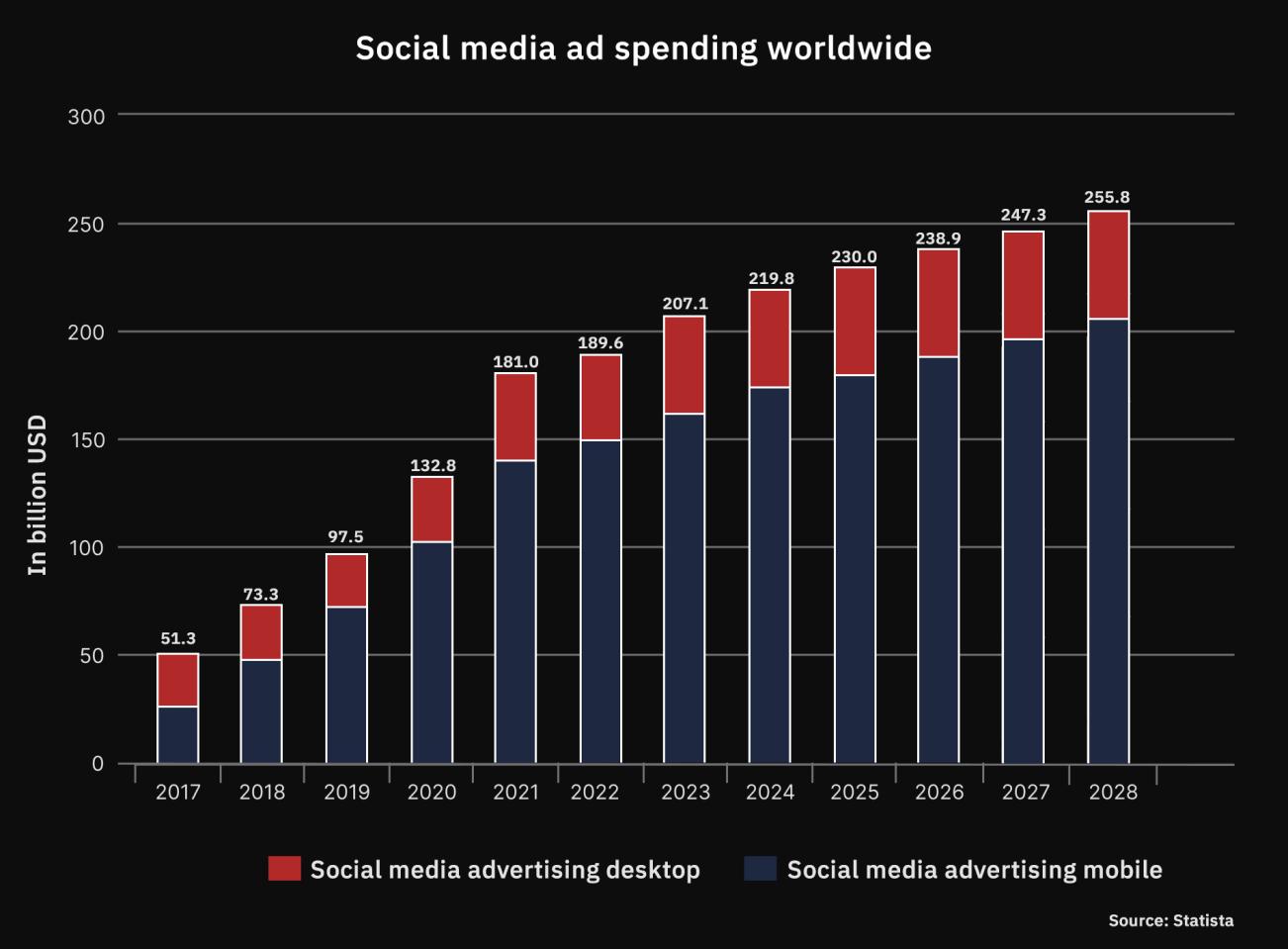
An added advantage of social media advertising platforms is that they offer robust analytics tools that provide insights into ad performance, engagement, and demographics helping companies target their audience with more efficient and effective strategies.
Personalize the approach
Adding a personal touch to social media interaction creates a sense of connection between the brand and its customers. According to a survey conducted by Statista, 63% of marketers experienced increased conversions as a benefit of personalization. Establishing a personalized approach to social media efforts can significantly boost social media ROI.
Personalized and relevant content resonates more with the prospects contributing to increased engagement across channels. It has the potential to drive more website visits, sign-ups, and purchases. Personalized advertising facilitates appropriate utilization of budgets and resources by targeting the right audience segments.
Personalization in social media has long stopped being a trend, it has rather become a strategic necessity for brands looking to engage and connect with their audience.
Employ social listening strategies
Social listening involves monitoring conversations and discussions happening on social media related to the brand, industry, competitors, or anything relevant to the business. By establishing an active listening strategy, brands can gain valuable insights into competitor strategies, customer-brand sentiments, preferences, trends, and pain points.
By effectively listening to the customers, brands can identify positive sentiments that need promotion and negative sentiments that demand prompt assistance.
These insights have the power to identify opportunities for engagement, optimize social media efforts, and enable brands to address issues or concerns in real-time.
Build communities
People love to be a part of their favorite brand. Brand communities provide a space for customers to connect with each other and with the brand, establishing an emotional attachment. Launching brand communities across social media channels can fetch a loyal customer base who can turn into brand advocates, bringing in quality prospects.
Brand communities are also a powerful tool to run brand promotions. Encourage members to share their brand experiences that contribute to the user-generated content base. Hosting virtual or in-person events and activities such as product launches, interactive sessions, and meetups facilitates free exchange of ideas and perspectives, leading to heightened levels of brand engagement.
Casual and one-to-one interactions within the community help build trust and credibility for the brand. When customers realize that the brand cares for their concerns and sentiments, it accentuates their love for the brand which ultimately translates into extended customer lifetime value.
Compliance across platforms
60% of customers value trust and transparency as core brand attributes to evaluate brand authenticity. Even a hairline breach on compliance can be devastating for the brand as the news spreads on social media fast. Hence it becomes mandatory for brands to comply with relevant regulations.
Brands and its salesforce must accurately represent product claims, disclose earnings potential, and avoid deceptive marketing practices across their social media activities. MLM companies must shoulder the responsibility of training and educating distributors about compliance requirements and best practices.
Prioritizing compliance across social media channels is crucial, particularly for an industry like multi-level marketing where complex regulations and stringent policies are enforced by regulatory authorities.
Measure performance
Monitoring brand efforts on social media can reveal insights to evaluate the effectiveness and optimize the strategies. This can also help brands in estimating the ROI generated from the social media.
Most important social media metrics to track are
Engagement metrics such as likes, comments, shares, and retweets.
Reach and impressions to know how many people interacted with the content.
Increase in the number of followers to assess brand reach.
Conversion metrics such as sign-ups and purchases.
Brand mentions and customer sentiments to analyze brand perception.
Content performance to identify which type of content resonate well with the target audiences.
Return on investment to calculate the profits generated against the investment made for various social media activities.
Customer success stories: Leading MLM companies are driving remarkable results with competent solutions
MLM social media marketing: Best practices to follow
Multi-level marketing is a business model where building relationships are paramount. Social media, in the recent years, have emerged as a powerful ally helping MLM businesses build and maintain these crucial relationships. It acts as a bridge that connects brands with the audience, creating communities and nurturing engagement. However, to keep these relationships brands must uphold ethical business practices. Besides building a follower base, this can contribute to overall reputation and sustainability of the brand on social media.
- Keep strategies focused on the goals.
- Choose relevant social media platforms.
- Develop a consistent brand image.
- Engage target audience in every step.
- Provide value to the audience.
- Promote user-generated content.
- Partner with the right influencers.
- Review performance regularly.
- Adapt to evolving trends.
- Invest in salesforce training.
Common mistakes to avoid in MLM social media marketing
Social media profiles reflect the brand image among its customers and distributors. Every single move is being watched and judged by the audience. One wrong move, and the brand will lose their confidence. Besides maintaining a consistent and authentic brand image, brands must also oblige the expectations of its audience. This necessitates the need to watch out for pitfalls in the social media strategy.
Here are some common ones to focus.
Unspecified target audience
Ignoring or not clearly identifying audience segments can negatively impact the social media efforts. Without a clear understanding of the target audience, it would be difficult to tailor a content strategy. This will result in the wastage of time, revenue, and resources together with lowered engagement rates.
Lack of clear goals
Without a goal roadmap, brands cannot map their route to success. It becomes difficult to track and measure the effectiveness of the social media efforts and understand whether the brand is achieving its objectives. Outlining clear goals help prioritize tasks, optimize strategies, and direct the efforts to achieve better results.
Neglecting unpopular platforms
Facebook that has more than 3 billion users to Pinterest with just over 400 million users, every platform has its own distinct features and user base. Neglecting less popular platforms can limit the brand’s reach in finding potential audience. These platforms can still contribute opportunities for brand engagement with their niche audience. Ignoring these platforms could result in missing out on potential followers or customers who could be interested in the brand’s content or products.
Focusing on content quantity rather than quality
Some brands focus on frequent postings spamming their audience base only to fuel their resentment. This could also lead to decrease in engagement, credibility, and audience trust. Posting frequently is not a mistake, but posting sub-standard content is. While posting frequently is crucial to maximize visibility, low quality content may not resonate with the brand’s audience. Brands must strike a balance between quality and quantity to maintain a strong social media image.
Overlooking the importance of varied content formats
Different content formats appeal to different audience preferences. While some prefer to scroll down text and images, some others love to watch videos, and interact with the brand through quizzes, polls, and live streams. By posting only text or image content, the brand might be missing chances to engage audience who prefer video or interactive content formats. Each content format presents unique ways to convey information and capture attention.
In a recent video marketing statistics released by Wyzowl it was found that 44% of people prefer to learn about a new product or service through short video content.
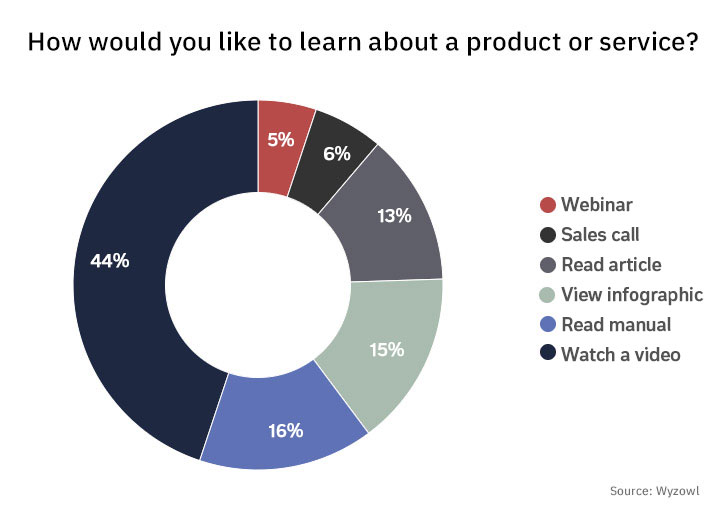
So, while planning the content strategy, consider including text content, images, and videos, to build an appealing story that best suits the brand’s audience.
Ignoring or deleting negative feedback
One of the grave mistakes brands often commit is to delete controversial content or negative comments. This can have a serious impact on the brand’s reputation and can lead to loss of customer trust. Negative feedback can be an eye-opener for brands because it delivers insights into areas requiring their attention. Ignoring or deleting user feedback conveys a negative message that the brand is not responsive to their concerns or open to feedback, creating serious backlash for the brand.
Instead of ignoring negative comments, brands must address the concern transparently and take it up as an opportunity to demonstrate their commitment to customer satisfaction.
Being too promotional
Promotional content is a welcome when it rightly addresses customer concerns. But being overly promotional can tag the brand as spammy and users may choose to unfollow the brand’s account. Constant sales pitches decrease audience engagement and questions the brands credibility.
In addition to promotional posts, brands must also include informative, entertaining, or educational posts that can help build rapport and credibility among the audience.
Undefined success metrics
Any effort, big or small, must be monitored on a regular basis to evaluate the effectiveness of the efforts and track progress toward the goals. Unidentified success metrics can send a brand haywire on social media platforms, leading to wasted revenue and resources.
Establishing well-defined success metrics help brands to stay focused on their social media goals, derive data-driven insights to make informed decisions, ultimately driving success.
Buying followers
There is a lot of difference between organic followers and money-bought followers. While it may just show a hike in the follower base, the results are temporary and can cause serious harm to the brand image. These illegit follower base will not have any interest in the brand’s products or services or content. As a result, engagement rates and brand credibility will crumble.
This may also lead to penalization as many social media platforms have policies against buying followers. Brands to have a healthy social media presence, must focus on building organic audience through authentic content and targeted strategies. This may be a tiresome process but will yield genuine and sustainable results.
Ignoring data
Data-driven insights hold the power to transform a business confidently and positively. Working on assumptions can risk the efforts compared to making evidence-based decisions. Ignoring social media data will also cause brands to lose valuable insights that can help optimize strategies, improve performance and drive better results. Data also provides in-depth insights on audience preferences, behavior, and engagement patterns, allowing brands to tailor the content to better suit their interests.
Regularly analyzing various data metrics such as engagement rates, click-through rates, and conversion rates enable brands to identify trends and patterns that are crucial to refine their social media strategy to maximize the impact.
How to measure the success of social media strategies for MLM businesses
While having a solid goal and strategy is essential, success depends on so many other factors. Creating and publishing posts daily will not fetch good results either. There are key metrics that MLM companies must monitor regularly. This will allow brands to measure the effectiveness of their efforts in identifying, reaching, and engaging their target audience. Brands can implement efficient monitoring of their key success metrics with the help of the best MLM software.
Count on these metrics that contribute to the success of social media marketing of MLM companies.
Growth of follower base indicates an expanding audience reach and an increased potential for brand visibility. This also signifies more loyal customers and improved business growth.
Engagement metrics such as clicks, likes, shares, and comments provide valuable insight into how well the audience is interacting with the content. They serve as indicators of content quality, relevance, and favorability among the target audience.
Increase in website traffic analyzed through tools such as Google Analytics gives a clear picture on how social media efforts are directing potential customers to the brand’s website.
Number of subscribers acquired through social media is a clear performance indicator of the social media marketing efforts in growing the subscriber base of the brand’s products or services.
Pre-campaign and post-campaign sales data denote the impact of social media strategies in revenue generation highlighting the brand’s market reach, customer interest, and purchasing behavior.
Number of referrals generated through social media is an important metric that measures the brand’s organic reach and influence. This also provides insights into the strength of brand’s community and level of trust and loyalty it has cultivated among its audience.
Number of positive word-of-mouth mentions signal positive brand sentiments and reputation that the brand has accrued across their social media channels. It is an organic endorsement and advocacy of satisfied customers.
Average customer acquisition cost in social media is a metric that determines the efficacy of the efforts rendered and helps brands make informed decisions about resource and revenue allocation and strategy optimization.
Social media ROI is the measurement of financial output generated against the resources invested. Measuring the social media ROI involves analyzing various other metrics such as lead generation, sales revenue, customer acquisition, etc.
Monitor competitor’s social media activities to gain insights into industry trends, audience preferences, and their marketing strategies. This way brands can benchmark their performance, refine their strategies, and maintain a competitive edge in the market.
Social media strategies of popular MLM brands
Leaders in the multi-level marketing industry have come a long way forward and social media has played an indispensable role in shaping their success. These market leaders adopt a multitude of strategies including influencer partnerships, campaigns, product launches, training, USG, and community building to empower their brand among their social media audience.
We have analyzed the social media activities of popular MLM companies from the top 100 MLM companies list, to decipher valuable insights into their strategies and effectiveness in engaging their social media audience.
Amway
The direct selling company well-known for its health, beauty, and home care products has consistently held the coveted top position among the world’s top MLM companies for an impressive number of years. This success depends on so many factors, with social media being one among them.
Amway employs social media to achieve two primary goals, one is to engage its network of Independent Business Owners (IBOs) and their customers. The second one aims to provide comprehensive training and resources to its IBOs to support their growth and success. This includes training them on best practices, and videos and guidelines to enhance their business across social media channels.
Amway through personalized social media approaches, aims to create brand awareness, build stronger relationships, and inspire the community.
Amway social media follower base
Avon
Avon is a leading “social selling beauty company”, with skin care, personal care, cosmetics, and perfumes as its product line. The innovation and inclusion that the brand has demonstrated has made it the personal favorite of many. The global beauty brand capitalizes the power of social media to engage and expand their network. The awe-inspiring social media campaigns of Avon has created a great impact in the growth of the brand across its social media channels.
Here are some of their successful social media campaigns.
Shop & Learn
Shop & Learn is a live streaming campaign where distributors and customers can learn more about different Avon products thus enjoying an informed purchasing experience. Hosted by influencers and the company’s direct sellers, the campaign has drawn much attention to the brand and its products.
Embrace your power
Avon UK launched a global campaign, Embrace your power, across TV, digital, and its social channels. According to YouGov BrandIndex, this campaign boosted Avon’s ad awareness score mainly among the Britons, aged 50 and above. During a 3-month observation period, the metric grew from 4% to 7% among 35- to 49-year-olds. Avon’s ad awareness score among 18-to-34-year-old Britons also witnessed an improvement, from 3% to 5%.
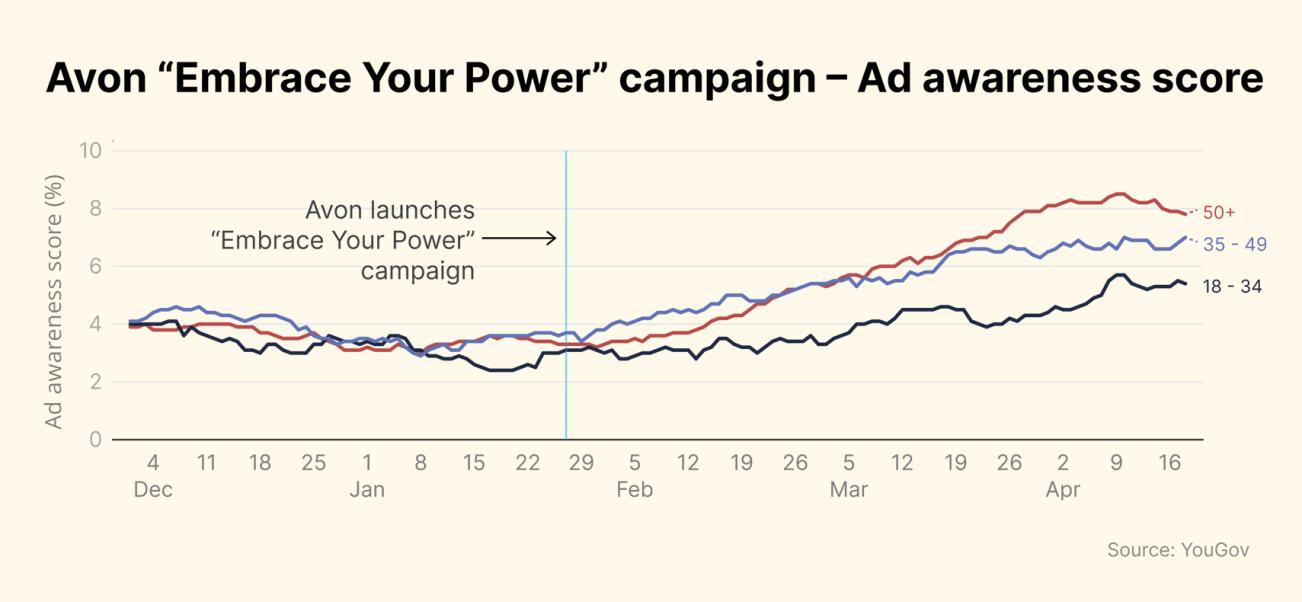
Avon social media follower base
Herbalife
With over a million followers across its social media channels, the direct selling health and wellness company, prioritizes user-generated content in addition to campaigns and other promotional posts. Herbalife understands the importance of social networking and encourages its distributors to tap into the potential of these platforms to promote their business.
The company has a social media presence on platforms like Facebook, Twitter, Instagram, YouTube, Flickr, Delicious, etc.
The brand does not believe in “sell, sell, sell” strategy, instead, prioritizes on sharing information that are valuable and interesting.
#ImWithYou
Herbalife launched a new global campaign based on maintaining a healthy active lifestyle. The campaign focused on inspiring people to lead a happy and healthy life. The year-long campaign launched in 2023 featured distributor and employee fitness events across 95 markets.
Herbalife social media follower base
Nu Skin
Nu Skin Enterprises is an American multi-level marketing company that sells beauty and wellness products across 50 markets worldwide. The company boasts of a strong social seller network who have been successfully selling Nu Skin products across various social media platforms. Nu Skin confides in the power of social media to curate strong and real relationships.
Many of their social media campaigns have garnered attention for its uniqueness and novelty. Nu Skin utilizes social media as a channel to create product awareness and to connect and communicate with their brand audience.
Lather. Rinse. Repeat.
With a view to increasing organic reach across their social media channels and to showcase their social corporate responsibility, Nu Skin initiated the “Lather. Rinse. Repeat.” campaign. The campaign was then promoted with other habitual and meaningful tag lines like
- Inspire. Act. Repeat.
- Recognize. Care. Repeat.
- Embark. Empower. Repeat.
Each tag line focused on various aspects of the brand like product awareness, sustainability, and entrepreneurship. The brand unveiled a series of static image posts, GIFs, and video posts as a part of their campaign.
#NuSkin40
Celebrating its 40th anniversary, Nu Skin, launched a social media campaign with hashtags, #ILoveNuSkin and #NuSkin40. The campaign encouraged customers to capture a video of their favorite Nu Skin products, and post and share it on their social media accounts with these hashtags. This earned a significant number of user-generated content, creating an extended level of brand awareness and driving considerable organic reach.
Nu Skin social media follower base
Mary Kay
The direct selling beauty brand is rooted in its mission to empower the lives of women and their families around the world. The brand has made consistent efforts toward realizing its mission and has provided career opportunities for many women from diverse backgrounds. Their strategies are also centered around this mission and is well evident in their brand promotions.
Unveiling innovation in everything they do, from Suite 13 to their Skin Analyzer app, the brand has been consistently capturing attention. This applies to their social media promotions too. Mary Kay takes great care in crafting its social media posts prioritizing inclusivity and information, besides being promotional.
I Can
The company launched a month-long campaign in August 2016 across multiple platforms with a goal of reaching new audiences. Inspiring their IBCs to share their true stories, Mary Kay recorded the personal stories of over 500 consultants and published them across their social media handles and other digital channels.
With 100+ unique experiences starting with the words “I can...”, the campaign fetched 43.9 million impressions and 1.2 million engagements. The video content had 943,000 views across all social media platforms. During the campaign period, the official campaign hashtag, #MyMKLife, was used over 25,000 times across Twitter and Instagram.
The I Can campaign is said to have generated 219,431 direct clicks to MaryKay.com/ICan.
60 Years of Stories
Marking its 60th anniversary, Mary Kay launched a social media campaign with the hashtag #MaryKay60. The campaign celebrated its independent business consultants and their journey with Mary Kay.
While celebrating its diamond jubilee, the brand encouraged its consultants to share their Mary Kay story highlighting how the brand has empowered them and boosted their confidence to become the best version of themselves. As a prelude, a podcast on the life of Mary Kay Ash was shared on Spotify.
Mary Kay social media follower base
Future trends in social media
Social media is witnessing a new transformation every day. New features to added functionalities, each platform is competing to provide an unparalleled experience to its users. We are already witnessing several trends that are set to shape the future of social media. Ephemeral content, engaging experiences with AR, growth of niche communities, and more emphasis given on privacy are currently trending across various social media channels.
As we step into the future, social media will position itself to be more dynamic and immersive with current trends reflecting a shift toward more interactive and personalized experiences. Here are the most anticipated future trends that are set to transform social media.
Short-form content will still reign
Ephemeral and short-form content will not lose its role. With its ability to capture attention quickly and cater to the preferences of users with lower attention spans, short form content like micro-videos, stories, GIFs and memes, and short articles and posts will capture the audience. People will continue to enjoy and engage with short-form video and audio content. 73% of people prefer short videos to learn more about a product or service. With increasing number of users sticking to content that only requires short attention span, brands can still drive engagement with quality and relevant content.
AI will govern the platforms
AI-powered technologies will take personalization, content, and user engagement to the next level. Augmented reality and virtual reality will accelerate engagement across posts and shopping. Social commerce can revamp itself with more tailored recommendations and experiences.
AI will help in stringent content monitoring for brands to detect and remove content that goes against the brand guidelines. Brands can leverage data compiled by AI to fuel their decision making process. Customer support will be driven by AI-powered chatbots and virtual assistants that offer real-time addressal of customer concerns. Chatbot conversations will be led by NLP and machine learning equipping them to understand and respond to complex customer queries.
Social listening tools driven by AI will become more advanced, enabling brands to monitor brand mentions and discussions across various social media channels in real-time. In addition to efficiently tracking brand mentions, these tools can analyze the sentiments of these mentions, offering businesses valuable insights for optimizing marketing and customer service strategies.
Social media shopping will continue to attract users
The advent of social commerce in 2022 opened doors of opportunities for brands and users alike. With global social commerce sales to hit $6 trillion by 2026, this trend will continue to excite users and drive sales for brands.
The convenience of discovering and purchasing products without leaving the app appeals to customers looking for quick and effortless ways to shop online. The social proofs like user-generated content, reviews, and recommendations that accompany social media shops make it easier for users to make informed purchase decisions.
Above all this, social media will continue to contribute towards brand engagement by enabling brands to directly connect with customers through personalized recommendations, interactive content, and real-time customer support. Thus, social media shopping will remain as medium to fostering brand engagement and repeat purchases.
Nano-influencers and micro-influencers will advocate brands
Nano-influencers and micro-influencers, with their follower base, will evolve as powerful brand advocates influencing users’ purchase decisions. Their recommendations are perceived as genuine and authentic when compared to macro influencers and celebrities. Their recommendations will be more impactful and tend to have increased engagement rates.
User-generated content will get even more relevant
Given the authenticity and trustworthiness of user-generated content, it will resonate more strongly with users compared to branded content. Relatable experiences will create more interactions and thus contribute to higher engagement rates.
It is also a strong component in community building among users with similar interests and perceptions. User-generated content often goes viral, spreading rapidly across channels reaching a wide audience. MLM companies can leverage this cost-effective strategy for increasing brand awareness instead of investing in expensive advertising campaigns.
Sustainability will become a priority
Increasing awareness on environmental issues and the spotted consequences of unsustainable practices has created a growing demand for individuals and organizations to adopt sustainability in everything they do. Social media has also contributed to fueling this demand. It serves as a platform for spreading awareness and influencing people in several ways to contribute to the sustainability initiatives.
Decentralized networks will replace social media platforms
New platforms established on decentralized networks such as blockchain and other distributed systems are already disrupting current social media platforms. Mastodon, Diaspora, Signal, Minds, etc. are to name a few. Users benefit from getting an increased control over their data highlighting their right to data ownership. Decentralized social networks being less susceptible to censorship or manipulation by authorities adds to the user’s freedom of expression.
These platforms allow for seamless sharing of content and interactions across the decentralized web. For MLM businesses, this means that incorporating decentralized social media networks into their social media strategy could add trust and transparency among their distributor and customer base.
Conclusion
Social media will continue to transform the boundaries of connectivity and communication. Users will look toward the social image of brands, their acceptability, and the way they address customer concerns. With changing trends, preferences, limitations, and opportunities what is important for MLM businesses, is to responsibly deal with the complexities, and absorb the trends while ensuring that its potential for positive impact is realized while continually mitigating its pitfalls.
Epixel MLM Software anchored 100+ network marketing companies to success through their business process automation in more than 88 countries. Let Epixel MLM Platform revolutionize your MLM business with 100+ proven features intelligently tuned for small, medium, and large enterprises.
